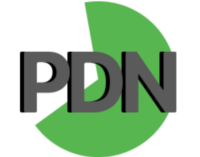Online Account Opening
Advertising
Opening an online bank account offers a convenient way to manage your finances without needing to visit a physical branch. With options like Discover providing no monthly fees and 1% cash back on debit card purchases, it’s easier than ever to find a suitable account that meets your financial needs.
Whether you’re looking to open a checking, savings, or CD account, the process is designed to be quick and straightforward.

You can open an online bank account from major institutions such as Bank of America, which offers a range of accounts with benefits like mobile banking and access to numerous ATMs. Similarly, Chase provides guidance on selecting the right type of account and comparing available options, ensuring you make an informed decision.
The steps typically involve choosing the account type, entering your personal information, and funding the account. Platforms like Bankrate guide you through each stage, making it a manageable process. By leveraging these online resources, you can efficiently set up your account and gain access to a wide range of banking services.
Preparing for Online Account Opening
Before opening an online account, you need to understand specific requirements, gather necessary documents, and choose the right bank that fits your needs.
APPLY NOW!
Understanding the Requirements
To open a bank account online, you typically need to meet certain criteria set by the financial institution. This often includes being at least 18 years old and a resident of the country where the bank operates. Banks also require you to provide verifiable identification, such as a government-issued ID.
Another requirement is a valid Social Security number or taxpayer identification number. Some banks may have additional prerequisites like a minimum initial deposit, which varies depending on the type of account. Understanding these requirements ahead of time can save you from incomplete applications or rejections.
Gathering Necessary Documentation
Gathering the right documentation beforehand can streamline the process. You will need your government-issued ID (such as a driver’s license or passport), your Social Security number, and proof of residence. Proof of residence can be a recent utility bill or lease agreement that shows your current address.
Having a secondary method of identification might be required by some banks. Prepare any required financial information, such as details from an existing bank account if you plan to transfer the opening deposit electronically. Keeping these documents readily available reduces the chance of delays.
Choosing the Right Bank
Selecting the right bank is crucial for your financial needs. Consider what you want from your account, whether it’s low fees, high-interest rates, or convenient customer service. Research banks and read reviews to compare offerings. Some banks might better suit your needs if you prioritize online banking features.
Look into the security measures the bank has in place for online accounts. Ensure the bank is FDIC insured, as this provides additional security for your funds. Finally, make sure the bank’s mobile app and online services are user-friendly and meet your expectations for functionality and convenience.
The Online Account Opening Process
Opening a bank account online is straightforward and convenient. Begin by selecting the type of account you need. This could be a checking account, savings account, or even a credit card account.
Make sure you have your personal information ready. This includes your Social Security number, identification details, and proof of address.
- Visit the bank’s website: Navigate to the appropriate page. Look for links like “Open an Account” or “Get Started.”
- Fill out the application: Provide your personal information accurately. Ensure you double-check for any typos or errors.
- Submit the necessary documents: Some banks might ask for additional documents, like a scanned copy of your ID or utility bills.
- Fund your account: Decide how much money to deposit initially. You can transfer funds from an existing account or use a credit card to make the deposit.
- Complete any additional steps: Some banks require additional verification steps, such as answering security questions or verifying your email address.
After these steps, your account should be ready for use. Make sure to keep your login information secure and monitor your account for any unauthorized transactions.




